Have we angered Sylph
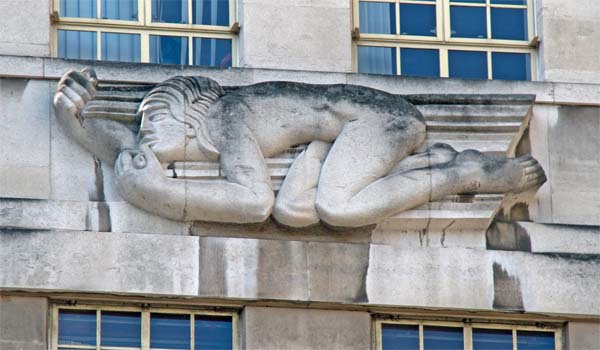
The North Wind sculpture by Eric Gill – St. James’s Park Station

South Wind Sculpture by Eric Gill at St James’s Park Station
Or was it Zeus, god of storms, thundering through the night on his chariot drawn by the four horse-shaped winds.
Something disturbed the elements, the agitation kept me awake for hours.
Perhaps it was needed – this morning is clean and calm and gentle. The windless warm sun makes it difficult to remember the ferocious power nature roared only hours previously. Actually most of yesterday we were blown and blizzarded.
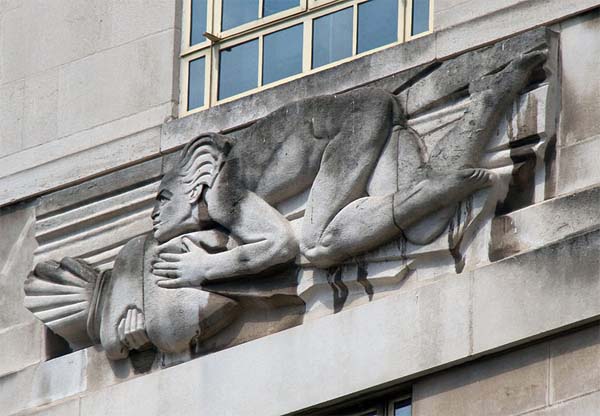
East Wind sculpture by Allan G Wyon – St James’s Park Station
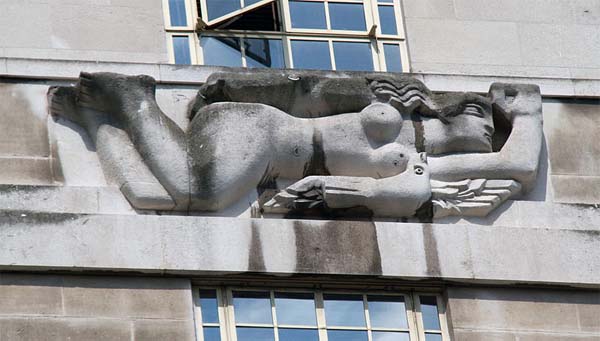
West Wind sculpture by Samuel Rabinovitch at St James’s Park Station
As I lay awake in the darkness, the sounds of storm outside, I wondered what it must have been like in a time when there was less understanding of nature and the science of weather. How would I explain the rather frightening events, who or what made the noise and turmoil. To what would I attribute my own alarm, dread – heightened senses and excitement.
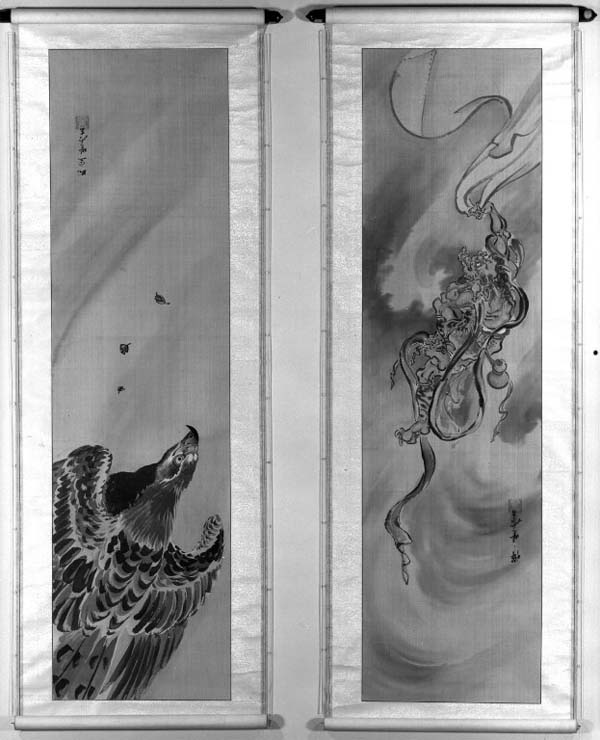
The gods of wind chased by an eagle, hanging scroll by Kawanabe Kyosai – via
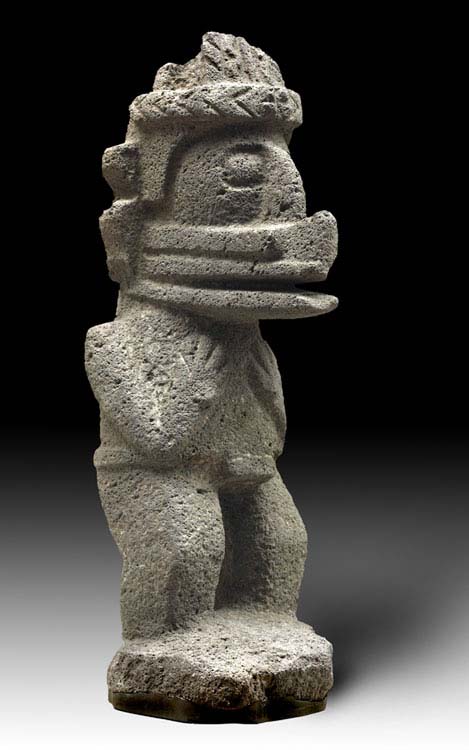
A stone sculpture of the Aztec wind god Ehécatl – depicted with a bird’s beak mask, which is sometimes set with the fangs of a serpent.
Sylphs are the spiritual beings that inhabit the element Air. Their activities are manifest in the gatherings of clouds, in the blowing of the wind, the downpour of rain and the formation of snow. They are also responsible for the growth and maturity of all the plant life. Sylphs have appeared in many myths and legends. Some tales tell us that if you listen carefully, they’d talk to you on the wind as it passed through caves and caverns.
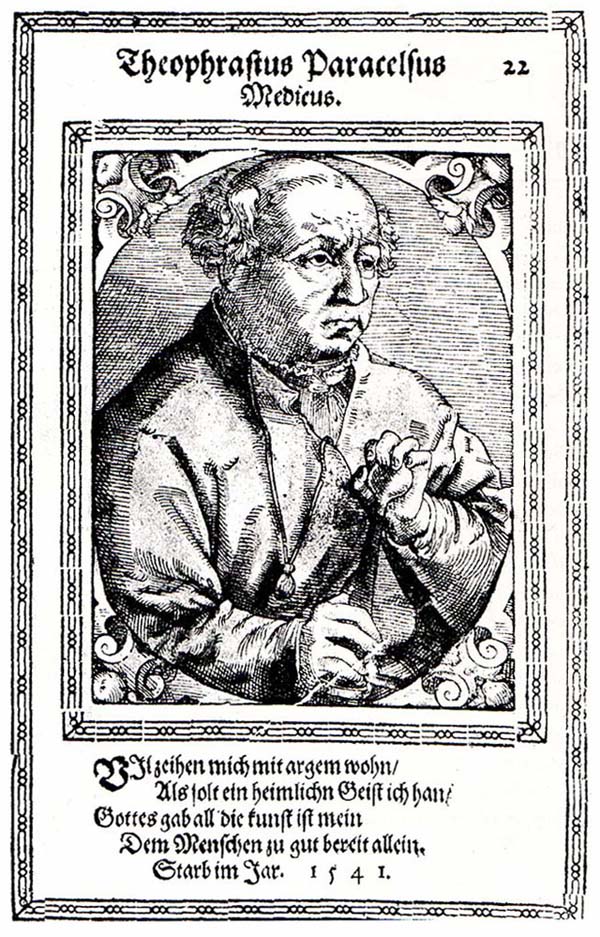
It is thought that the term Sylph originates in Paracelsus who describes sylphs as elementals of air. Paracelsus (1493 – 1541) was a Swiss/German Renaissance physician, botanist, alchemist, astrologer and general occultist. He is known as a revolutionary for insisting on using observations of nature rather than looking to ancient texts. Knowledge in Nature, Knowledge of Nature: Paracelsus and the Elementals is an interesting article on the subject.
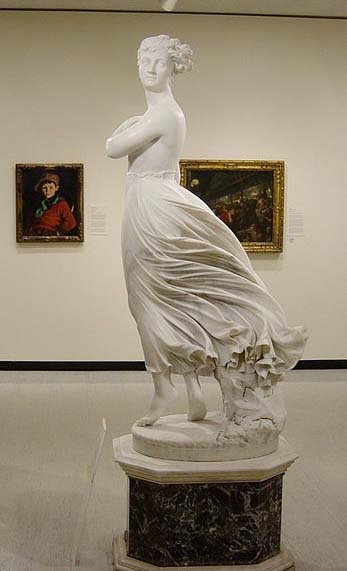
This is a marble sculpture of West Wind (1876) by Thomas R Gould – certainly this doesn’t portray the ferocity of the wind last night
If beginning to understand the nature of wind wasn’t easy, it isn’t easy to sculpt either, though it sculpts rather well, or is it Sylph at work?

6 Comments
I don’t think a body can twist like it is portrayed in the first west wind sculpture. It’s a complete side view except for her boobs. maybe if he hadn’t left out her other arm it would make sense. Nature is powerful. wind is powerful. I’ve hunkered down and made it through a number of hurricanes passing directly over. watching trees that otherwise seem rigid and unbending sway mightily and thrash is scary. I don’t think ancient people were terrorized by storms. they lived in and with nature. they knew rain and wind and sun and storms even if they didn’t have the meteorological knowledge that explained it all.
I think I sleep like that Ellen, without bird, but I wouldn’t mind – there are two arms one above and then other out in front. For me this is the one carving of the St James’s Park sculptures that perhaps best describes wind – it does have a sort of power and determination against the blast (or with it). Hurricanes are a different level. Living with nature means I think a deep respect, but ancients would have suffered the effects no doubt and there is terror in that prospect. So there are the beautiful myths and stories to warn and explain.
I looked at it again. I guess that is her other arm above her.
They’re all very weathered now and streaked with London pollutants. 55 Broadway, where these sculptures are, overlooking St James’s Park, London was designed by Charles Holden and built around 1927. It was constructed for London Underground for offices. At the time it was the tallest office block in the city. It was faced in Portland stone and the sculptors were commissioned to carve the eight relief panels. There are also two Jacob Epstein sculptures Day and Night. This year the building is being vacated and is going to be converted into residential use.
Can you imagine trying to sculpt that? Just thinking about it boggles my mind…what a accomplishment to make anything of that size. And then I wonder how they got it up there afterwards.
You have created a lovely new blog, it’s beautiful and clean. I love it.
Jen
Thanks for lovely comments Jen, there is a lot a carving there – the folds of fabric in the marble figure boggle my mind – all inspiring!